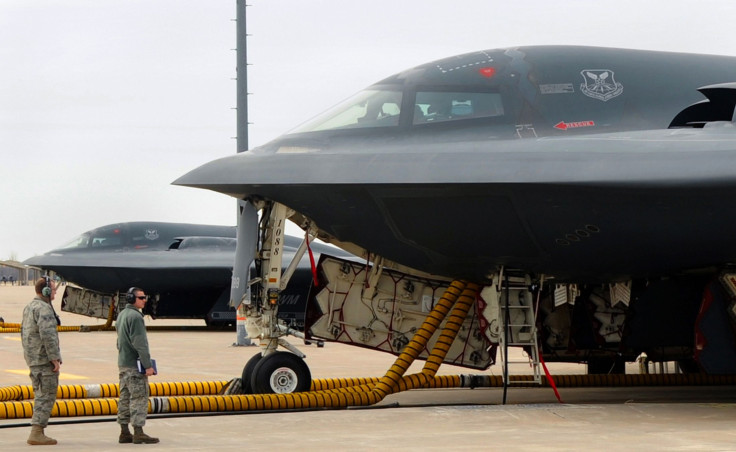US Air Force's Secret Stealth Bomber Details Will Emerge When Pentagon Unveils 'Black Budget'

Pentagon officials are divided over how many new details to reveal about the upcoming U.S. Air Force long-range bomber funded by the military's "black budget," which is shrouded in secrecy. The B-2 bomber's most precious technical details are expected to remain under wraps, though the public could learn about advanced weapons systems and intelligence capabilities of which only government developers are aware.
This month the U.S. government is expected to select either Lockheed Martin/Boeing or Northrop Grumman as the defense contractor to head up the next B-2 Long-Range Strike Bomber program. Details including weapons systems, stealth technology, speed, low-frequency radar capabilities and other specifications could be included in the contract award, Bloomberg News reported.
Again, exactly what will be revealed hasn't yet been decided, though Air Force Secretary Deborah Lee James is reportedly leaning toward the funding and acquisition details rather than “the crown jewels -- the technical capabilities.”
The Pentagon has been roundly criticized for an advertised price tag of $55 billion -- or $550 million for each plane -- to develop the 100-jet fleet. With national budgets now becoming a political issue in Congress, the Pentagon has opted to move sensitive national security work to classified budgets to which national regulators are more sensitive.
Contract considerations come after the current fleet of B-2 stealth bombers were deployed to the Asia-Pacific region and to Britain to conduct war games over Europe.
“The budget environment could make this a unique debate in Congress because the overall budget looks very uncertain,” Todd Harrison, a senior fellow at the Center for Strategic and Budgetary Assessments, told Bloomberg. “There will be a lot of questions about funding and how the priority of the LRS-B program is placed above others.”
© Copyright IBTimes 2025. All rights reserved.



















